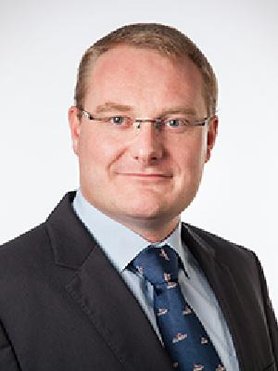

Dr.ing. S. (Sebastian) Schreier
Dr.ing. S. (Sebastian) Schreier
Profiel
Biografie
Sebastian gradutated from the University of Rostock, Germany with a diploma in Mechanical Engineering and specialization in Naval Architecture and Ocean Engineering in 2005. He then started his research work on liquid sloshing at the Chair of Ocean Engineering at the University of Rostock where he obtained his doctoral degree in Engineering from the Faculty of Mechanical Engineering and Marine Technology in 2009. From 2009 to 2010 Sebastian spent a year as Post-doctoral Fellow in the Global Center of Excellence program on Aquaculture of Bluefin Tuna and other Cultured Fish at Kinki University, Nara, Japan where he investigated the flow around net-cages. After this year he returned to the Chair of Ocean Engineering at the University of Rostock as Senior Research Assistant to continue his experimental research of liquid sloshing in tanks as well as to teach bachelor and master courses on several subjects in Ocean Engineering. In October 2016 Sebastian joined TU Delft as Assistant Professor in Ship Hydromechanics.
Expertise
Sebastian works on experimental investigation of fluid structure interaction on various time and length scales. These scales range from Ultra Large Floating Structures in waves with length of several hundred meters to kilometers and time scales of seconds to sloshing and slamming impacts on length scales of millimeters and time scales of microseconds. The focus of these investigations is on the fluid flow and the influence of the structural response on the hydrodynamic loads. Analytical and semi-analytical models are employed. The main research method are physical experiments in the test facilities including the towing tanks with wavemakers as well as a dedicated sloshing test rig. Main quantities of interest are integral forces on and deformations of the structures as well as pressure and velocity fields in the fluid.
Sebastian's experimental work includes the development of test setups as well as sensors and measurement techniques. He currently works on pressure sensor clusters to increase the spatial resolution of pressure measurements as well as the introduction of Particle Image Velocimetry (PIV) as a standard tool in the towing tank.
Expertise
Publicaties
-
2024
The potential of end-of-life ships as a floating seawall and the methodical use of gap resonance for wave attenuation
Gil Wang / Daniel Bar / Sebastian Schreier
-
2022
Application of Modal Expansion Method to Very Flexible Floating Structures (VFFSs)
Min Zhang / Sebastian Schreier
-
2022
Measuring Hydroelastic Deformation of Very Flexible Floating Structures
Sebastian Schreier / Gunnar Jacobi
-
2022
Review of wave interaction with continuous flexible floating structures
Min Zhang / Sebastian Schreier
-
2021
Experimental investigation of wave interaction with a thin floating sheet
Sebastian Schreier / Gunnar Jacobi
-
Onderwijs 2023
Onderwijs 2022
Nevenwerkzaamheden
-
2023-01-01 - 2024-12-31
-
2023-01-01 - 2024-12-31